Holmes Institute HI5003: Economics of the Australian Mining Industry
VerifiedAdded on 2022/11/10
|14
|848
|223
Report
AI Summary
This report analyzes the Australian mining industry, focusing on its economic aspects. It begins with an introduction to Australia's resource wealth, particularly in minerals, and the significance of the mining industry, which contributes significantly to exports and GDP. The report outlines the mining industry's background, including key minerals and its oligopolistic market structure dominated by a few large firms. It then delves into the resource boom that started in 2003, examining its causes and impacts on the mining industry, such as increased production, employment, and revenue, as well as the broader Australian economy, including impacts on GDP, employment, and living standards. The report also discusses government policy during the boom and concludes by emphasizing the mining industry's crucial role in Australia's economy. The analysis includes figures illustrating exports, market structure, demand and supply dynamics, and macroeconomic equilibrium, supported by references to relevant academic sources.
1 out of 14
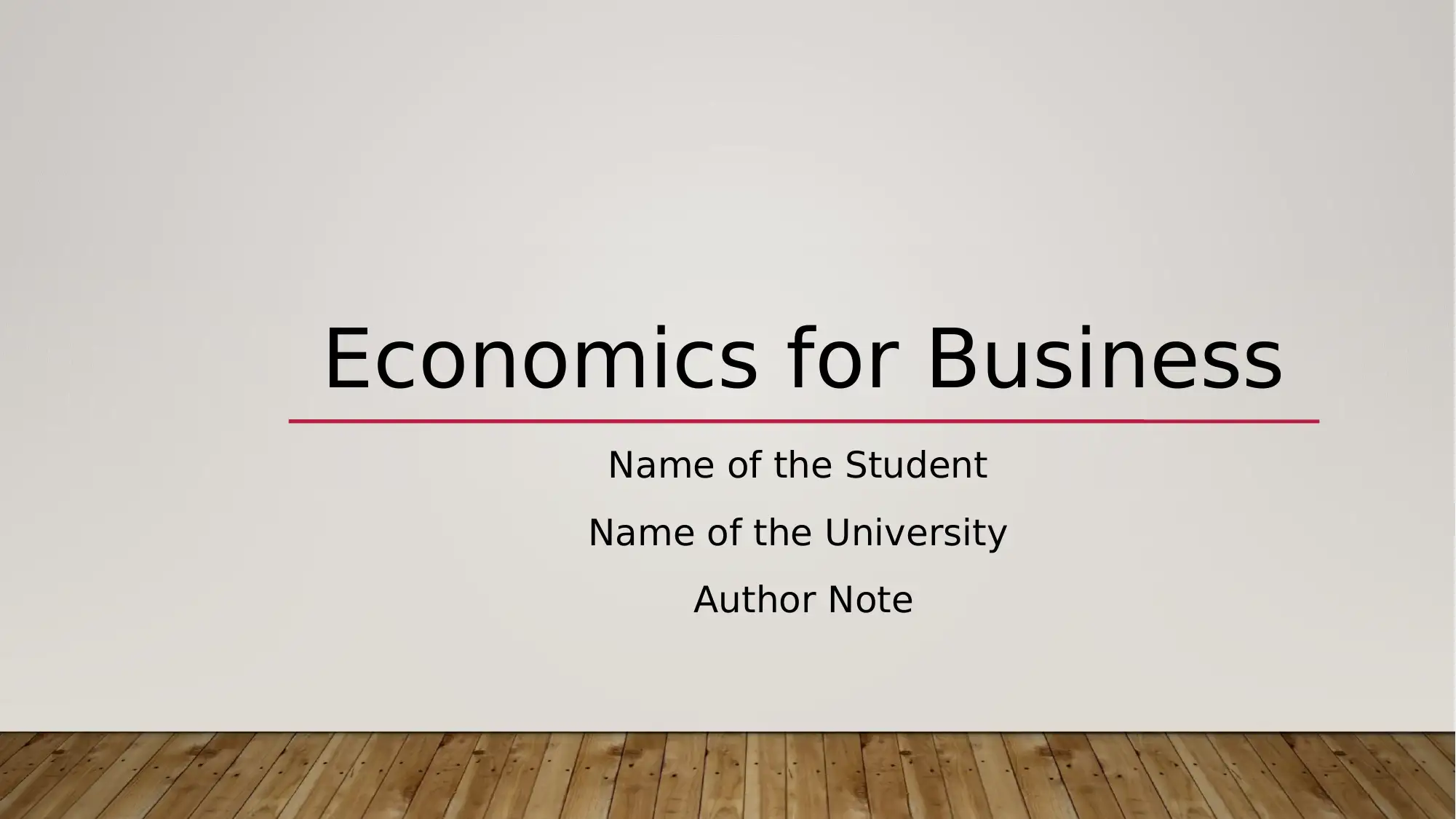
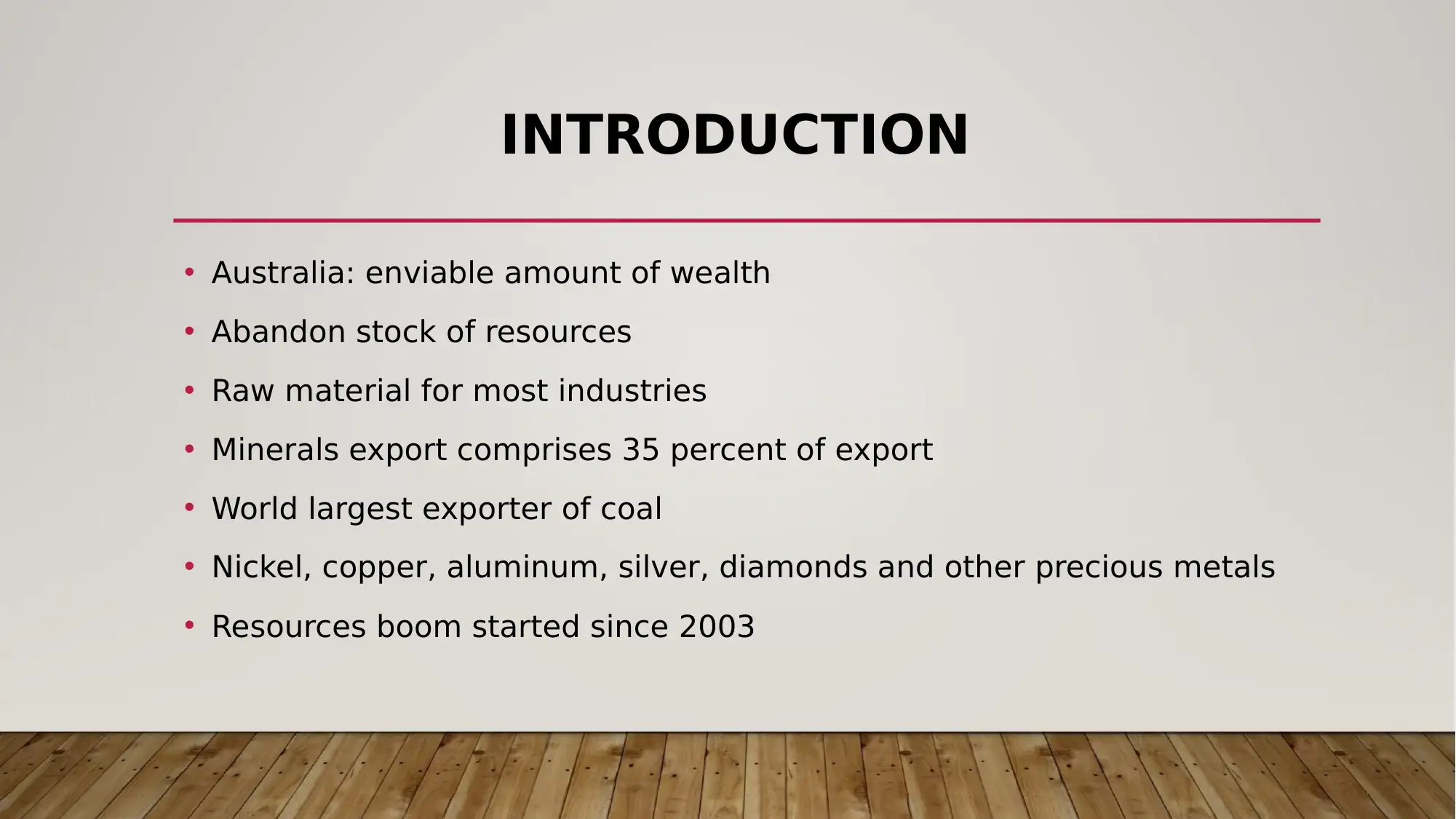
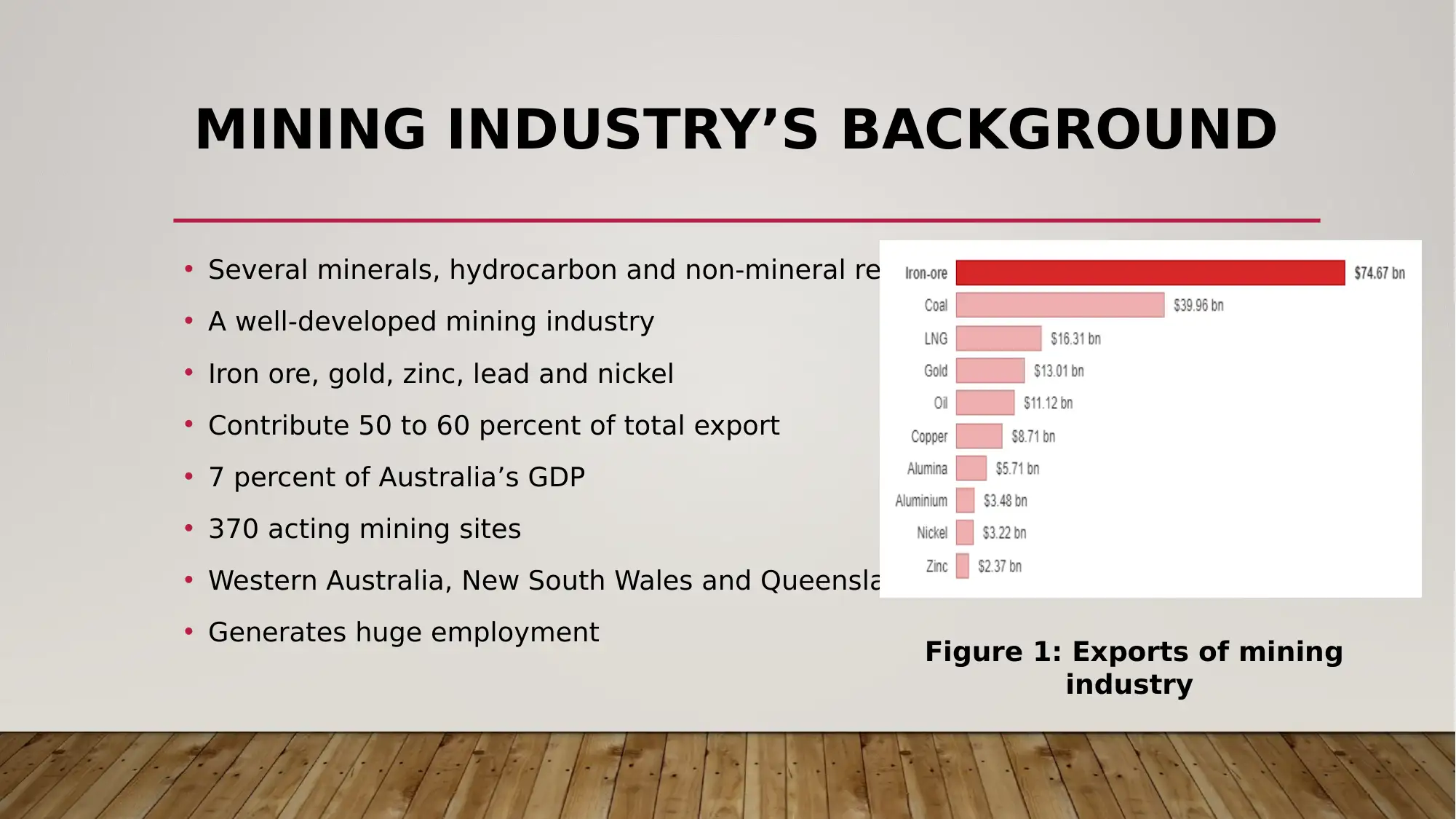

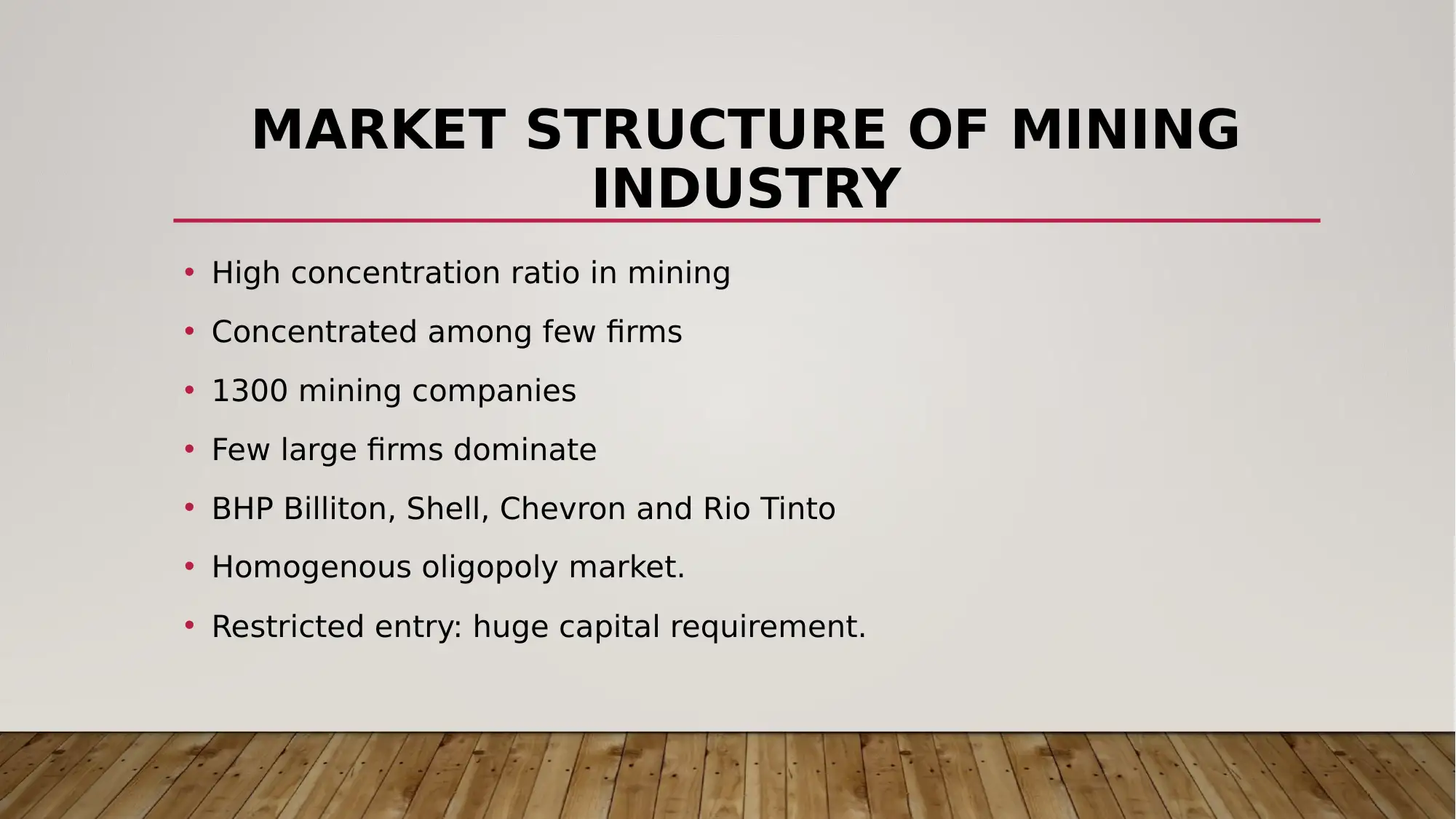

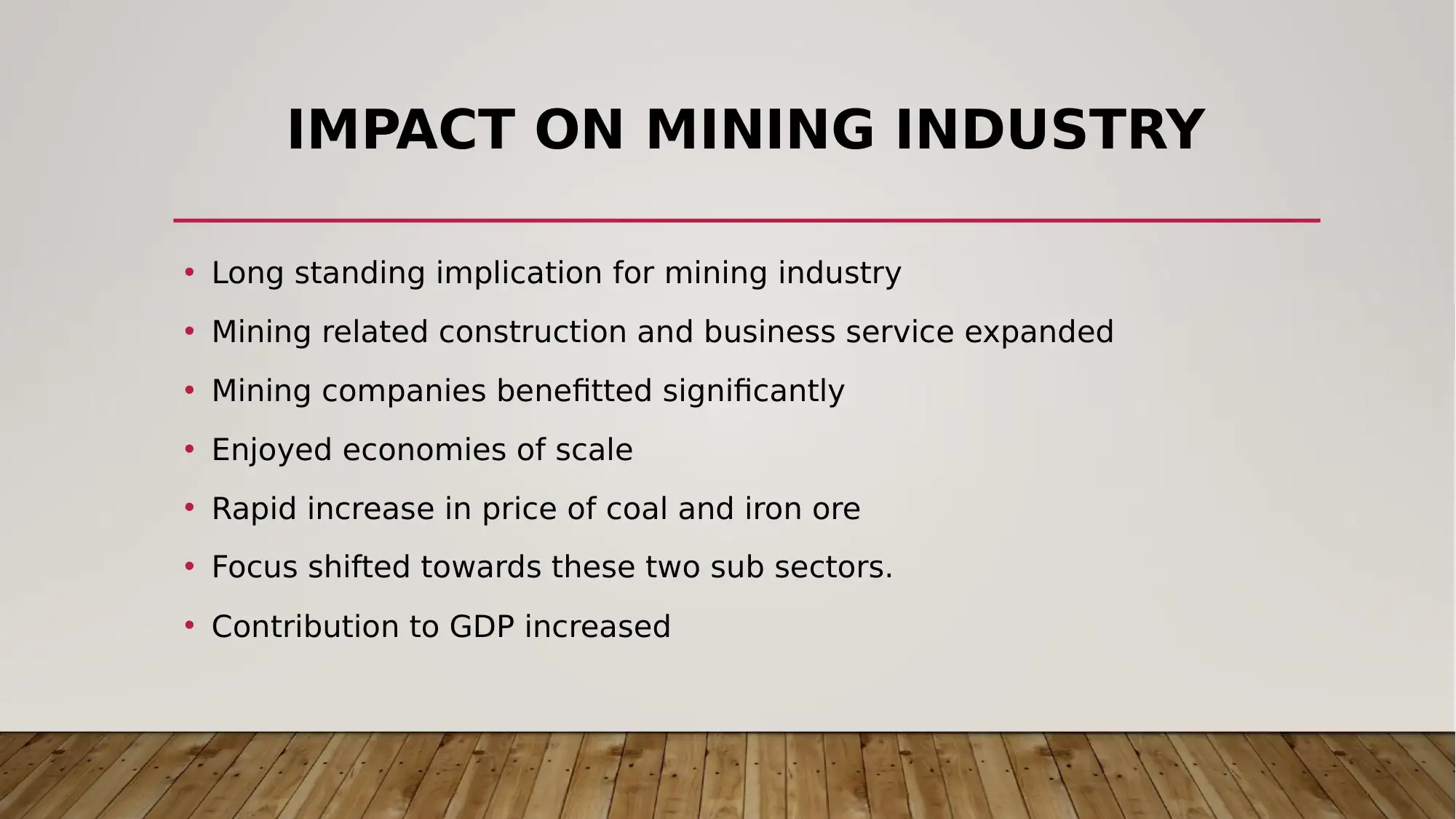
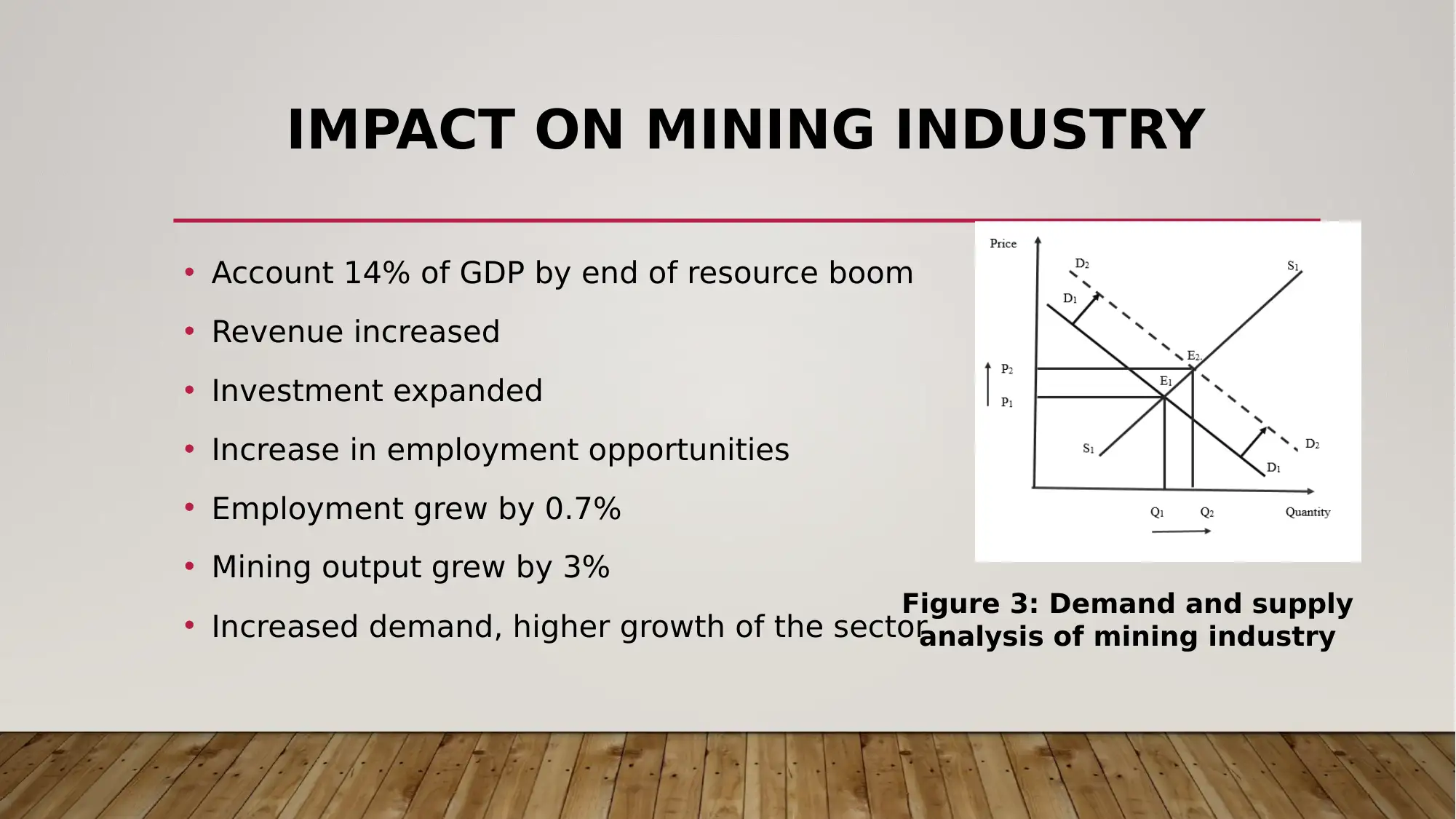



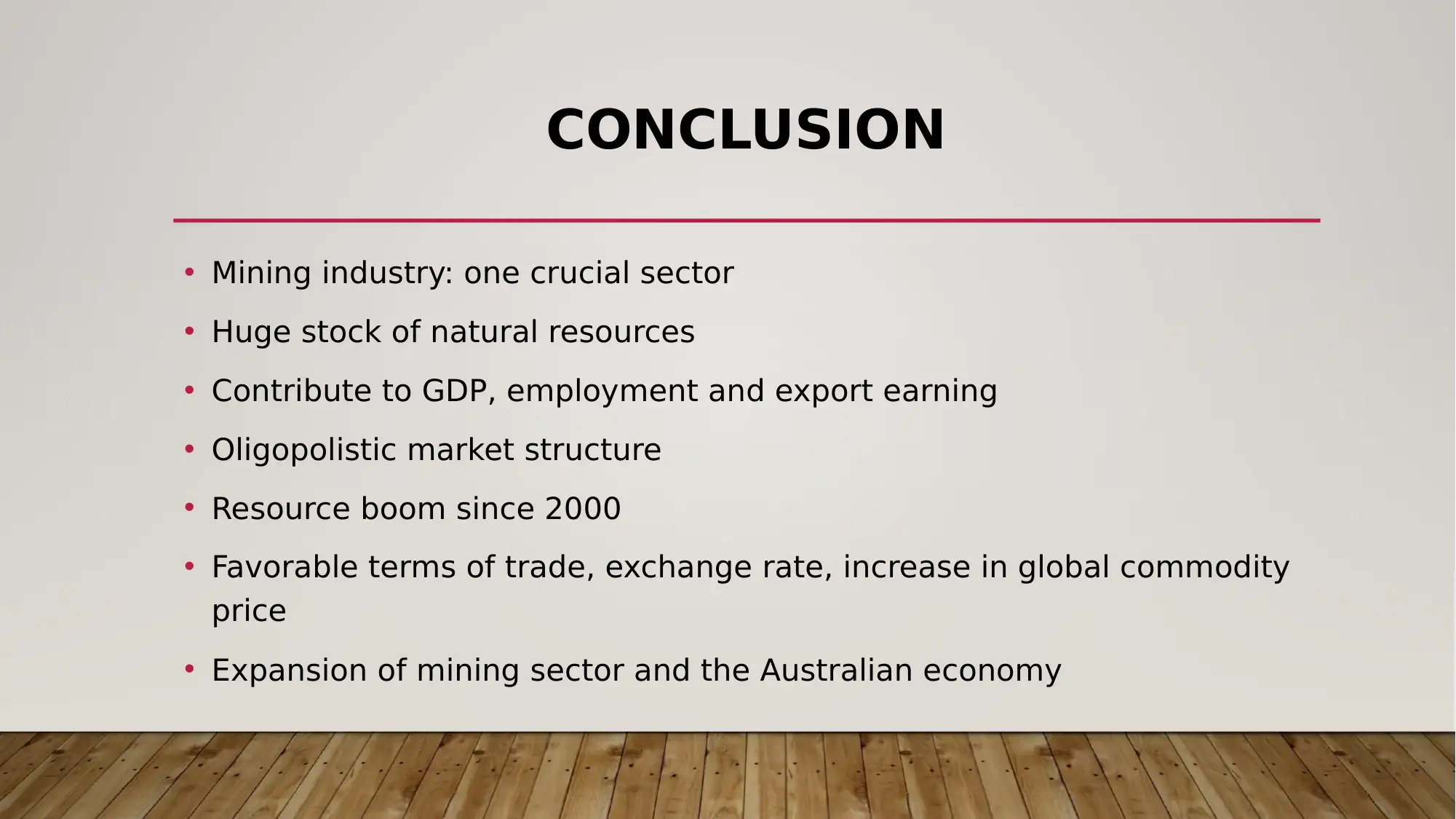
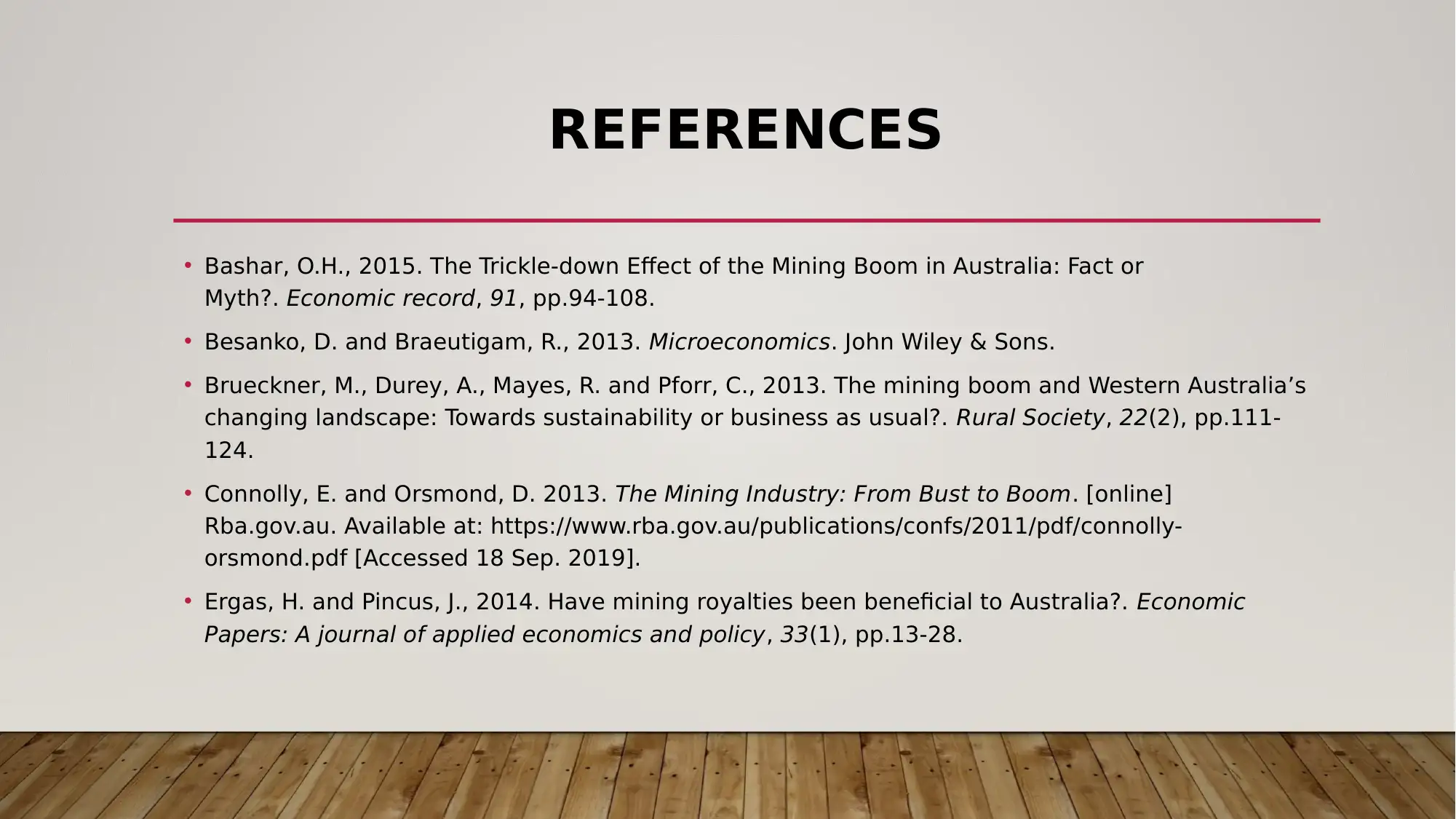






![[object Object]](/_next/static/media/star-bottom.7253800d.svg)